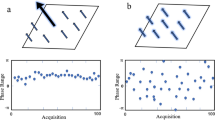Abstract
During the period 1994–2004, before the Mw 9.3 Sumatra-Andaman earthquake of 26 December 2004, Thailand was moving horizontally constantly eastward with an average rate of approximately 33.2±1.1 millimeters per year in ITRF2000. The magnitude of the horizontal strain rate was less than 30 nanostrain per year, which was considered small but significant. After the occurrence of the mega thrust earthquake, a horizontal movement to the southwest direction is evident at different rates all over the Thai region. Large co-seismic horizontal displacements were observed in the southern part of Thailand, while moderate and small displacements were seen in the central and northern parts of Thailand. The Royal Thai Survey Department (RTSD) carried out multiple Global Positioning System (GPS) field campaigns to monitor the post-seismic displacements. However, their efforts were complicated by the second mega thrust (Mw8.7) earthquake, which occurred at Nias, Sumatra on 28 March 2005. This study focuses on the use of GPS data, collected between 1994 and 2006, gathered from six GPS stations located at Phuket, Chumporn, Chonburi, Uthaitani, Srisaket and Lampang in Thailand and an additional station located in the northern part of Malaysia to derive changes in the strain rate. Here we find that today’s deformation in Thailand is dominated by SW-NE trending extension. This feature is in agreement with post-seismic relaxation occurring on the Sumatran trench.
Similar content being viewed by others
References
Cai, J. and Grafarend, E. (2007) “Statistical analysis of geodetic deformation (strain rate) derived from the space geodetic measurements of BIFROST Project in Fennoscandia.” Journal of Geodynamics, Vol. 43, No. 2, pp. 214–238.
Chamot-Rooke, N. and Le Pichon, X. (1999) “GPS determined eastward Sundaland motion with respect to Eurasia confirmed by earthquakes slip vectors at Sunda and Philippine trenches.” Earth and Planetary Science Letter, 173, No. 4, pp. 439–455.
Hashimoto, M., Choosakul, N., Hashizume, M., Takemoto, S., Takiguchi, H., Fukuda, Y., and Fujimori, K. (2006). “Crustal deformations associated with the great Sumatra-Andaman earthquake deduced from continuous GPS observation.” Earth Planets Space, Vol. 58, No. 2, pp. 127–139.
Iwakuni, M., Kato, T., Takiguchi, H., Nakaegawa, T., and Satomura M. (2004). “Crustal deformation in Thailand and tectonics of Indochina peninsula as seen from GPS observations.” Geophysical Research Letters, Vol. 31, L11612.
Janssen, V., Coleman, R., and Bassis, J. N. (2009). “GPS-derived strain rates on an active ice shelf rift.” Survey Review, Vol. 41, No. 311, pp. 14–25.
Marone, C., Scholz, C. H., and Bilham, R. (1991). “On the mechanics of earthquake afterslip.” Journal Geophysical Research, Vol. 96, No. B5, pp. 8441–8452.
Michel, G. W., Becker, M., Angermann, D., Reigber, C., and Reinhart, E. (2000). “Crustal motion in E- and SE-Asia from GPS measurements.” Earth Planets Space, Vol. 52, No. 10, pp. 713–720.
Michel, G. W., Yu, Y. Q., Zhu, S. Y., Reigber, C., Becker, M., Reinhart, E., Simons, W., Ambrosius, B., Vigny, C., Chamot-Rooke, N., Pichon, X. L., Morgan, P., and Matheussen, S. (2001). “Crustal motion and block behavior in SE-Asia from GPS measurements.” Earth and Planetary Science Letters, Vol. 187, No. 3, pp. 239–244.
Satirapod, C., Laoniyomthai, N., and Chabangborn, A. (2007b). “Crustal movement of Thailand disc due to the 28 March 2005 earthquake as observed from GPS measurements.” International Journal of Geoinformatic, Vol. 3, No. 1, pp. 29–33.
Satirapod, C., Simons, W., Promthong, C., Yousamran, S., and Trisirisatayawong, I. (2007a). “Deformation of Thailand as detected by GPS measurements due to the December 26th, 2004 mega-thrust earthquake.” Survey Review, Vol. 39, No. 304, pp. 109–115.
Satirapod, C., Simons, W. J. F., and Promthong, C. (2008). “Monitoring deformation of Thai geodetic network due to the 2004 Sumatra-Andaman and 2005 Nias earthquake by GPS.” Journal of Surveying Engineering, Vol. 134, No. 3, pp. 83–88.
Satirapod, C., Wicheanjaroen, C., Trisirisatayawong, I., Vigny, C., and Simons, W. J. F. (2005). “Surface displacement due to banda-aceh earthquake and its effect on geo-informatic work in Thailand.” Proc., IEEE IGARSS 2005, Seoul, Korea, pp. 2907–2909.
Simons, W. J. F., Socquet, A., Vigny, C., Ambrosius, B. A. C., Matheussen, S., Haji Abu, S., Subarya, C., Sarsito, D. A., Promthong, C., Iwakuni, M., Morgan, P., and Spakmen, W. (2007). “A decade of GPS measurements in Southeast Asia: Resolving Sundaland motion and boundaries.” Journal of Geophysical Research, Vol. 112, B06420.
Socquet, A., Vigny, C., Simons, W., Chamot-Rooke, N., Rangin, C., and Ambrosius, B. (2006). “India and Sunda plate motion and deformation along their boundary in Myanmar determined by GPS.” Journal of Geophysical Research, Vol. 111, B05406 doi 10.1029/2005JB003877
Vigny, C., Simons, W., Abu, S., Ronnachai, B., Satirapod, C., Chhoosakul, M., Subarya, C., Omar, K., Abidin, H. Z., Socquet, A., and Ambrosius, B. A. C. (2005). “Insight into the 2004 Sumatra-Andaman earthquake from GPS measurements in southeast Asia.” Nature, Vol. 436, No. 7048, pp. 201–206.
Vigny, C., Socquet, A., Rangin, C., Chamot-Rooke, N., Pubellier, M., Bouin, M., Bertrand, G., and Becker, M. (2003) “Present-day crustal deformation around Sagaing fault, Myanmar.” Journal of Geophysical Research, Vol. 108, No. B11, p. 2533, doi:10.1029/2002JB001999.
Zumberge, J., Heflin, M., Jefferson, D., Watkins, M., and Webb, F. (1997). “Precise point positioning for the efficient and robust analysis of GPS data from large networks.” Journal of Geophysical Research, Vol. 102, No. B3, pp. 5005–5017.
Author information
Authors and Affiliations
Corresponding author
Rights and permissions
About this article
Cite this article
Satirapod, C., Bamrungwong, S., Vigny, C. et al. Change of strain rate in Thailand after the 26 December 2004 and 28 March 2005 earthquakes using GPS measurements. KSCE J Civ Eng 14, 215–220 (2010). https://doi.org/10.1007/s12205-010-0215-4
Received:
Revised:
Accepted:
Published:
Issue Date:
DOI: https://doi.org/10.1007/s12205-010-0215-4




